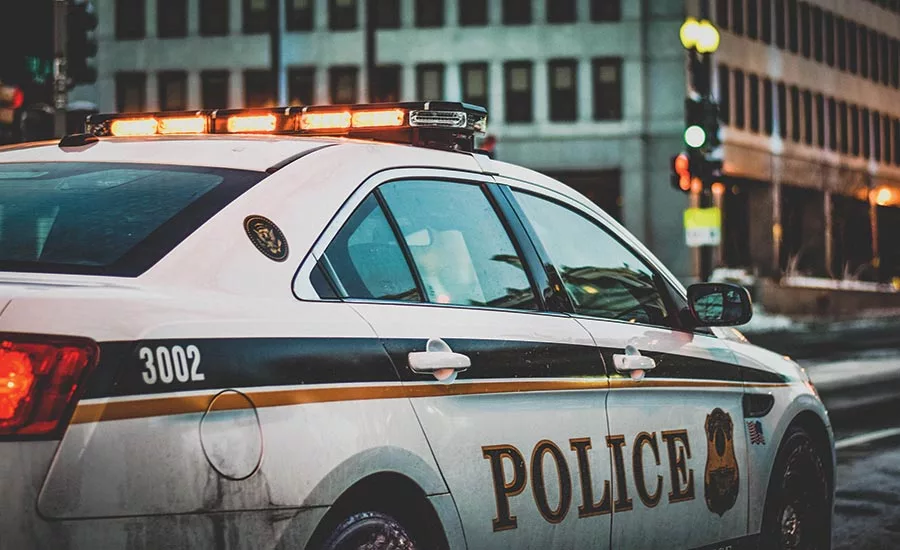The Watchful Eye of Retail Surveillance in the Digital Age
Video surveillance, remote monitoring and facial recognition are critical security tools in retail security and loss prevention.



Keith Jelinek, an analyst at the Berkely Research Group, says that RFID are finding their ways into retailers at amazingly fast rates – the cost per item to tag, along with the monitoring hardware for retail stores and distribution centers is very affordable. Photo courtesy of Keith Jelinek
One minute and thirty-six seconds.
That’s all it took for seven thieves, both men and women, dressed in hoodies and jackets that adequately concealed their identity, to enter an Apple store in Natick, Massachusetts, in a carefully coordinated heist. They were able to disable security tethers and make off with 19 iPhones, worth about $13,000. They were caught on security video, and the entire footage was posted on the Natick, Massachusetts, Police Department’s Facebook site.
Apple’s security strategy, though, has changed. They are cutting their security tethers on the tables within the store, allowing the devices to be handled freely. Unauthorized phones leaving the store will sound an alarm and Apple will have the ability to disable the phones remotely once they leave the store’s WiFi network. It’s likely they will continue to video monitor the stores also, though the thieves at the Natick store had not been caught several months later.
Organized Retail Crime Rise
As thieves enter an age of organized criminal efforts in retail theft, retailers are becoming shrewd in the many ways they approach not only loss prevention, but also retail surveillance.
Organized retail crime (ORC) is continuing to grow, with 83 percent of merchants surveyed reporting an increase in the past year, according to a research report 12th annual ORC study sponsored by the National Retail Federation.
“Retailers continue to deal with the challenges that come with fighting organized retail crime,” says NRF Vice President of Loss Prevention Bob Moraca. “Every day, criminals are getting more creative in the ways they manipulate the retail supply chain. Combating ORC is a full-time job, and it is a constant battle industry-wide for retailers large and small to stay one step ahead of these savvy criminals.”
Their research asked 59 senior retail loss prevention executives about their exposure to ORC and found that 100 percent said their companies had experienced it in the past year – up from 97 percent in 2015 and marking the first time in the survey’s history that all responding companies reported being a victim. In addition, 83 percent said ORC had grown: The average loss was $700, 259 per $1 billion in sales, a significant increase from $453,940 last year.
Sophisticated Surveillance for Sophisticated Crimes
The influx of theft from ORC has put retailers on the defense, and most are more interested than ever in having surveillance systems that help combat such crime. Moracca says that surveillance practices are not only becoming more sophisticated, but there’s a trend towards working surveillance of one entity with another. For example, an ORC ring could strike within a retailer inside a large shopping mall. The retailer’s camera can pick up the ring. Now, there are ways to link that immediately to the mall’s surveillance video as soon as the crime is reported and actually track the criminals during their transit to a vehicle or other mode of transportation. Then the chain of surveillance continues with a street or highway on-ramp camera coming into play that may be even more discrete and note the license plate of the fleeing vehicle.
The speed at which this is all happening is being melded into new technology and methods such that a more automatic trail is set up until law enforcement can catch up to the criminals. Moracca says this was precisely what was discussed at a recent meeting that NRF participated in with the International Council of Shopping Centers conference. Moracca says there was a desire for cooperation where digitally captured video data could be merged quickly. As he puts it, “The power of two becomes five, and you have a force-multiplier of video.” He mentions that this quick collaboration and integration was what led to the prompt capture of the Boston Marathon bombers. With the right technology and integration, it can also work well for retailers.
“Thieves are becoming far more sophisticated because technology has allowed them to be,” explains Ric Messier, Program Director, Cybersecurity and Digital Forensics at Champlain College in Burlington, Vermont. “This is true in the case of both technology thefts and also physical thefts. Retail companies are regularly at risk of having the data they are storing on behalf of customers stolen. This means that they not only have to protect their merchandise but they also have to protect against information theft.”
Messier points out that 10 years ago, 45.6 million credit and debit card numbers were stolen from the network of retailer T.J. Maxx over a period of more than 18 months by an unknown number of intruders. While this was not a direct lift of merchandise from the store, it was made possible by the criminals gaining access within the stores. “The TJX theft in the last decade, for example, came from thieves getting access to the networks in stores as well as the kiosks in the stores,” says Messier. “Any time you have a point of sale device in the store, it is connected to the backend infrastructure and that makes it a weak point for attackers.”
Remote Monitoring
The point-of-sale (POS) location within the store, while not the only location for crime to occur, it is a locus of criminal activity in many cases and a vantage point that is commonly monitored.
“Our POS data shows us that 30 percent of all retail loss happens at checkout, and that of that loss, 95 percent is the result of non-scans,” says Alan O’Herlihy, CEO of Everseen, who specializes in developing technology solutions and artificial intelligence for point-of-sale applications. He is seeing that non-scans are eight times more frequent at self-checkout than they are at staffed checkouts. So, the point of sale in general remains an important focus for retailers looking to cut down on loss, while self-checkouts, in particular, show the most room for improvement.
Moracca says that pan, tilt, zoom technology has greatly improved surveillance capabilities, particularly at a POS location. Nowadays, the ability to pan, tilt and zoom in on an employee or criminal allows loss prevention authorities to see the ring on a criminal’s finger, or a specific tattoo, aiding the overall posse. Such technology is ideal for remote monitoring and allows for viewing very detailed information from a remote location. They can scan multiple locations and pan in on ones of concern or where there’s suspicious activity.
A retail business owner should research the benefits around remote monitoring, which involves IP-based video surveillance systems that use a local network and the Internet to transmit and store digital images, says David Bitton, COO of New Jersey-based Supreme Security Systems. This allows business owners to monitor video data from virtually anywhere with an Internet connection, at any time, he says. The ability to monitor a single site or multiple locations remotely helps streamline operations, increase productivity and, most importantly, reduce costs. Off-site archiving of recorded video enhances on-site security by preventing local system tampering.
Bitton also sees security video being used to help stop vendor/supplier fraud. It is not uncommon for employees and vendors to collude to steal inventory. Typically, he says, high-value merchandise will disappear from the store after it is delivered...but before it can be properly accounted for and added into inventory. Thus, video surveillance can serve multiple purposes in addition to retail loss prevention.
Shoppers Vineyard, one of Supreme Security’s customers, is a large liquor retailer located in Clifton, NJ. They worked with the store’s management to design and install a surveillance system with comprehensive monitoring capabilities, including employee monitoring and remote monitoring. It was extremely effective, in large part because of the deterrence factor.
He adds that Shoppers Vineyard also installed a water-sensing alarm in the basement to warn of a flood risk before any damage can be inflicted on the products stored there. Also, with wine inventory, it is extremely important to ensure that the storage temperature and humidity remain at the correct levels, and if any changes are detected they can be addressed quickly and efficiently.
In addition to video surveillance, tagging merchandise is making great strides within the inventory of retailers. Keith Jelinek, an analyst at the Berkely Research Group, says that RFID are finding their ways into retailers at amazingly fast rates – the cost per item to tag, along with the monitoring hardware for retail stores and distribution centers is very affordable.
Capitalizing on Big Data
“This is a very offensive technology – instead of the traditional method of frequently inventorying product to then determine where there might be a loss, product can be rolled-up financially by location at any point in time,” says Jelinek. “This can be compared to POS data to determine if product was sold, or, was removed via theft. The same technology has another benefit, in that retailers are using it to monitor what is on the sales floor, and what is in the stockroom, to enable real time restocking opportunities.”
Another emerging technology that has emerged and will likely continue to become widely adopted in retail applications is the use of artificial intelligence and algorithms to gather data from huge repositories, assimilate it and solve crimes. This can be used, for example, with video technology to detect risky formats that could be a precursor
to theft.
O’Herlihy says video analytics paired with artificial intelligence as retailers’ new alternative that allows them to address process both theft and process mistakes in real time. The way it works is that deep learning technology reads what’s happening within the video and is able to recognize numerous non-scan formats – whether intentional or accidental – that are not always discernible to the human eye, he says. As it detects a non-scan, it can alert store security within seconds so that they can address the issue – often before the transaction is even completed. This gives the retailer the advantage of being able to look at every single transaction, while offering the customer an improved experience where they don’t feel watched or interrupted during the process.
Another technology that utilizes data analytics is facial recognition technology. Photo IDs reside in many different databases from motor vehicles to and employer’s human resources database; there are many others. In the age of big data, where numerous databases may be accessed and intelligently scanned and computed, it’s quite possible that facial images captured with video imaging may be cross-compared accurately and quickly with face recognition technology to identify suspects or perpetrators.
The vast majority of today’s retail surveillance is effective as a defensive measure, adds Dario Bregic, Executive Vice President and Co-founder of Q-Face Systems in Los Angeles. Implementing offensive strategies such as situational awareness, localized crime intelligence, and suspect feature match technology are extremely effective in preventing retail loss before it happens, he notes. Situational awareness and localized crime intelligence allow the retailer to become aware of specific types of crime trends and criminal behavior near their location(s) and create an action plan when the crime trend or increase in specific crimes reaches a pre-determined threshold. Suspect feature match technology allows the retailer to quickly identify suspects for increased surveillance.
Looking for a reprint of this article?
From high-res PDFs to custom plaques, order your copy today!






